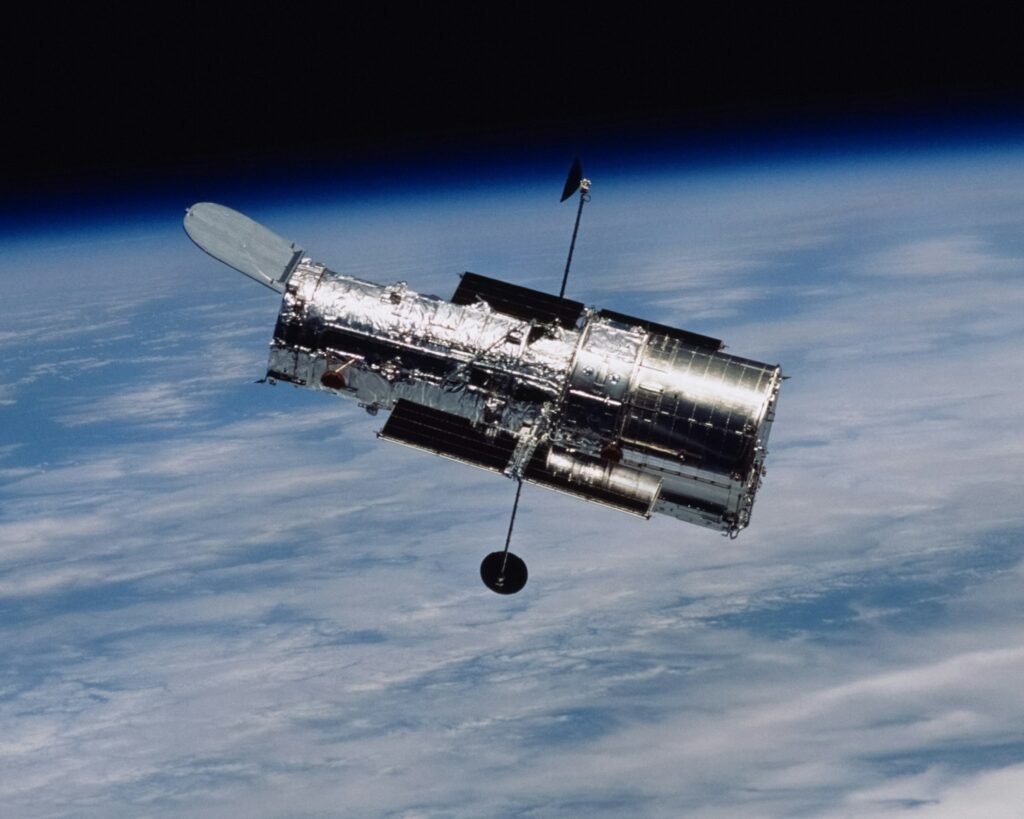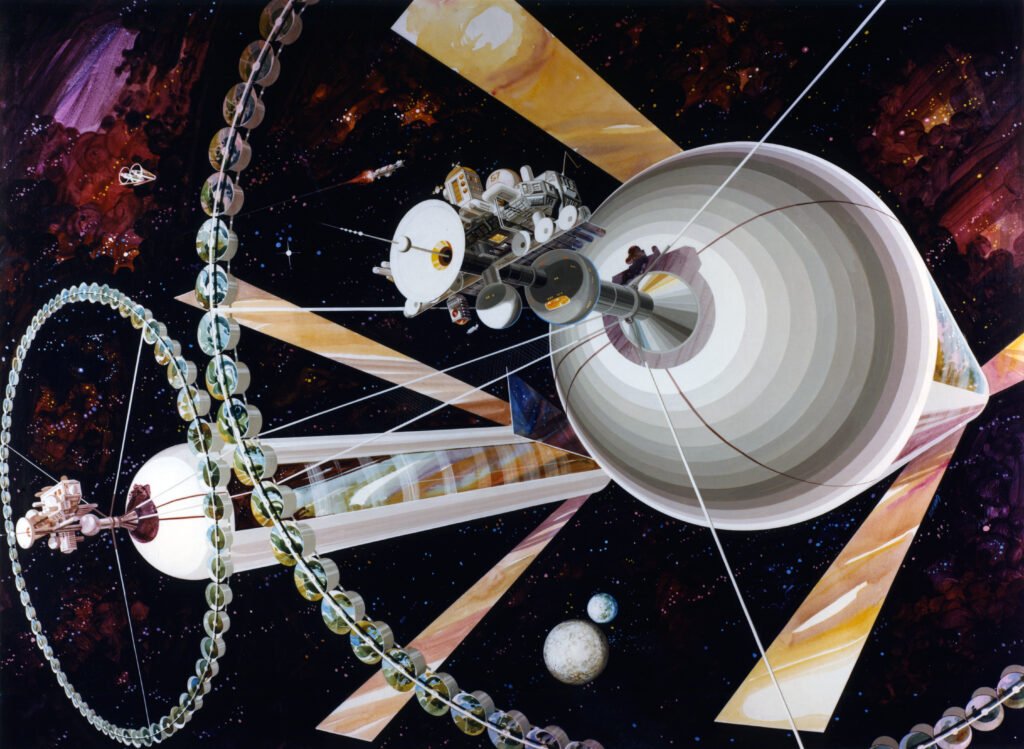It begins like a plot twist: a telescope launched with fuzzy vision becomes the most prolific image-maker in science, reshaping what we know about the universe and how we feel about it. The Hubble Space Telescope’s pictures did more than decorate classroom walls; they cracked open mysteries of cosmic origins, star birth, and planetary skies. Each image carried buried data – distances, ages, compositions – waiting to be decoded. As new instruments were installed and old ones retired, Hubble kept surprising astronomers with crisp views that ground observatories couldn’t match. And even now, with newer telescopes on the scene, Hubble’s catalog remains the backbone of modern astrophysics.
The Hidden Clues

Hubble’s most famous images are beautiful, but they’re also deliberately constructed maps of physics, with colors assigned to different filters that isolate elements such as hydrogen, oxygen, and sulfur. Those hues trace shock fronts, reveal the temperature of gas, and point to where stars are actively forming or dying. Fine structures – razor-thin dust lanes, wispy jets, and scalloped edges where radiation erodes gas – become signposts of how gravity and feedback sculpt galaxies. In many frames, background galaxies arc into smeared crescents, the telltale signature of gravitational lensing that lets scientists weigh the hidden mass of galaxy clusters.
I still remember standing in a museum beneath a floor-to-ceiling Hubble mosaic, realizing those delicate filaments weren’t just scenery; they were measurements. The pictures don’t just show the universe – they measure it, pixel by pixel.
From Ancient Tools to Modern Science

Astronomy started with simple lenses and patient sketching, moved to giant mirrors on mountain tops, and then jumped above the blur of Earth’s air with Hubble’s 2.4‑meter eye. Freed from atmospheric turbulence, Hubble delivers crisp details at roughly 0.05 arcseconds (about five hundredths of an arcsecond), a resolution that turned point-like fuzz into star-forming knots and compact galactic nuclei. Servicing missions upgraded its camera lineup, most notably the Advanced Camera for Surveys and Wide Field Camera 3, which gave Hubble a second life in visible, infrared, and ultraviolet light. That ultraviolet reach is crucial, peeling back the chemistry of hot stars, exploding remnants, and the upper layers of exoplanet atmospheres – wavelengths many other space telescopes can’t cover.
Together, these instruments built a uniform archive that scientists can revisit to test new ideas against old data. In a field where consistency matters, Hubble’s long-running, calibrated vision became a standard ruler.
Milestones in a Single Frame: The Deep Fields

Take the Hubble Deep Field campaigns, which started by staring at an apparently empty patch of sky and revealing thousands of distant galaxies layered back through time. By stacking long exposures over many nights, astronomers built a time-lapse of cosmic history, watching galaxies grow from small, irregular smudges into mature spirals and massive ellipticals. These images helped trace when the universe was most feverishly forming stars – roughly about one third of the way through its life – and how that frenzy tapered off. Later deep surveys refined the story, pushing farther toward the era when the first galaxies lit up the cosmos.
The deep fields turned a single pointing into a demographic census, linking the faintest glimmers to the physics of gas, dark matter, and feedback. It was like finding an old family album and realizing the baby photos were of the entire universe.
Stardust Nurseries: Pillars, Orion, and Proplyds

When Hubble imaged the Pillars of Creation in the Eagle Nebula, those towering columns became a modern icon, but their fame rests on science as much as spectacle. The pillars are dense clumps of gas and dust being eroded by nearby massive stars, with bright tips and silhouetted knots hinting at new suns forming within. Similar vistas in the Orion Nebula revealed protoplanetary disks – proplyds – etched by ultraviolet light, direct evidence that planetary systems are common byproducts of star formation. Across many star nurseries, Hubble traced how radiation carves bubbles, triggers collapse, and sometimes halts it, shaping whether a region builds clusters or fizzles out. Revisit images taken years apart and you can see subtle changes: shock fronts shift, and jets creep forward, a reminder that stellar birth is dynamic on human timescales.
These scenes connect our own solar system’s humble beginnings to today’s night sky.
Gravity’s Magnifying Glass: Frontier Fields

Hubble’s Frontier Fields program used massive galaxy clusters as natural telescopes, their gravity bending and boosting the light of galaxies far behind them. The result: exquisitely stretched arcs and multiple images of the same distant object, amplified enough to study systems that would otherwise be invisible. By mapping the distortions, researchers reconstructed where mass (including dark matter) must lie in the clusters, turning images into gravitational cartography. Those reconstructions refined models of how structure grows, how clusters assemble, and how star formation behaved when the universe was young.
The lensed galaxies themselves also yielded surprises – compact, rapidly forming clumps, unusual colors, and evidence for early dust. Hubble, in essence, folded space into a lens and used it to read the universe’s small print.
Worlds With Skies: Exoplanet Atmospheres

Long before exoplanet atmospheric science was mainstream, Hubble detected elemental fingerprints as planets passed in front of their stars, letting starlight filter through alien skies. Sodium in a hot Jupiter, water vapor in others, and hints of escaping hydrogen around certain worlds showed that exoplanet atmospheres are diverse and dynamic. Ultraviolet observations revealed how star-planet interactions can inflate and strip atmospheres, particularly around small, active stars. Follow-up studies compared clouds, hazes, and thermal structures, building the first comparative exoplanet meteorology.
While newer observatories now probe these atmospheres in greater detail, Hubble laid the groundwork and provided the long baselines that make change detectable. It turned “another planet” into “a climate to study.”
Measuring the Expansion: Standard Candles, Sharper Rulers

Hubble’s precise imaging of Cepheid variables in nearby galaxies tightened the distance scale that underpins almost every measurement in cosmology. With those calibrations, astronomers linked Cepheids to Type Ia supernovae, creating a ladder that stretches from our galactic neighborhood to the deep universe. This work refined the Hubble constant – the cosmic expansion rate – and sharpened tests of models that include dark energy. As independent teams revisited the data with improved methods and larger samples, a tension in measured expansion rates emerged, challenging theorists to explain what might be missing.
That debate remains scientifically healthy, because it forces instruments, calibrations, and assumptions to face tough cross-checks. In this way, Hubble’s images aren’t just pretty – they’re the yardsticks of modern cosmology.
Why It Matters

Before Hubble, ground-based telescopes fought atmospheric blur and gaps in wavelength coverage, leaving many cosmic processes partly hidden; Hubble’s orbit cleared the view and standardized the measurements. A single Hubble frame can carry the story of chemistry, motion, temperature, and time, knitting multiple lines of evidence into one testable picture. The telescope’s longevity means data taken years apart can be compared directly, critical for tracking change in variable stars, supernova remnants, and active galactic nuclei. Beyond the science, the images shifted public perception, turning abstract astrophysics into tangible landscapes and inspiring countless careers, including mine after seeing a battered Hubble poster in a school hallway.
They also guided investments, helping space agencies prioritize instruments that build on what Hubble revealed rather than duplicate it. In short, Hubble’s pictures became both discovery engines and cultural touchstones.
The Future Landscape

Hubble continues to operate as a seasoned partner to newer observatories, especially in ultraviolet wavelengths that many next-generation telescopes do not cover. Its sharp imaging still excels at pinpointing targets for deeper follow-up, tracking transient events, and providing time-domain baselines that stretch decades. Engineers manage aging hardware carefully, balancing performance and longevity so the observatory can keep producing high-value data. The scientific synergy is powerful: while newer instruments probe the faintest infrared signals, Hubble supplies complementary visible and ultraviolet insights that tie physics together.
Looking ahead, upcoming wide-field surveys and precision spectroscopy missions will lean on Hubble’s archive for calibration, cross-checks, and context. The legacy is active, not archival – a living dataset that keeps teaching us how to look.
Conclusion

If Hubble’s images sparked your curiosity, dive into public archives to explore calibrated datasets and outreach galleries that scientists use every day. Support local observatories and planetariums that bring these cosmic scenes to communities, and encourage schools to integrate real Hubble data into classroom projects. Consider participating in citizen-science platforms that classify galaxies or track variable stars – small contributions that add up to genuine discoveries. Advocate for sustained investment in space science, including maintenance of long-running archives that preserve data for future breakthroughs. Share the images and the questions they raise, because the habit of looking closely is where discovery begins. Curiosity grows when it is practiced together.

Suhail Ahmed is a passionate digital professional and nature enthusiast with over 8 years of experience in content strategy, SEO, web development, and digital operations. Alongside his freelance journey, Suhail actively contributes to nature and wildlife platforms like Discover Wildlife, where he channels his curiosity for the planet into engaging, educational storytelling.
With a strong background in managing digital ecosystems — from ecommerce stores and WordPress websites to social media and automation — Suhail merges technical precision with creative insight. His content reflects a rare balance: SEO-friendly yet deeply human, data-informed yet emotionally resonant.
Driven by a love for discovery and storytelling, Suhail believes in using digital platforms to amplify causes that matter — especially those protecting Earth’s biodiversity and inspiring sustainable living. Whether he’s managing online projects or crafting wildlife content, his goal remains the same: to inform, inspire, and leave a positive digital footprint.




